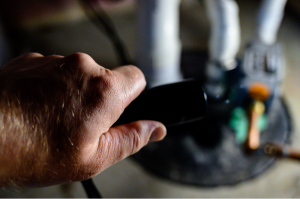
There are many different components that go into waterproofing a basement. These include drain tiles, waterproofing membranes, and more. Out of all these components, however, the sump pump is arguably the most important.
Are you looking for some information about sump pumps and how they operate? This basement waterproofing company in Kenilworth, Illinois is going to explain below.
What Is the Purpose of a Sump Pump?
The purpose of a sump pump is to push groundwater away from the outside of a home’s foundation. By doing this, the sump pump reduces hydrostatic pressure against the foundation, and therefore reduces its risk of cracking. The less the foundation cracks, the less water will make its way into the basement on the other side.
Sump pumps are installed in holes known as sump pits. These pits exist in the corners of their respective basements and act as access points to the groundwater that surrounds the home. Whenever groundwater levels grow too high in these pits, their respective sump pumps turn on, pumping that water far out into their corresponding yards.
This serves two purposes: 1. It reduces foundational cracking, and 2. It prevents basement flooding. This makes the sump pump hugely important when it comes to basement waterproofing. If you want to keep your basement dry on a consistent basis, you need to install a sump pump.
Are you interested in installing a sump pump? Do not hesitate to reach out to a trusted basement waterproofing company in Kenilworth, Illinois. They can help you find a sump pump that’s right for your home, and they can install it in the proper manner.
Pedestal Sump Pump vs Submersible Sump Pump
There are two primary kinds of sump pumps: pedestal sump pumps and submersible sump pumps. We’ll discuss each in detail below.
Pedestal Sump Pumps
Pedestal sump pumps are the cheaper of the two pumps. That said, they’re not as effective as submersible pumps. While they can successfully pump out water, they struggle to pump out stone and sediment. This can cause them to fail at times.
Pedestal sump pumps are also less durable than submersible pumps. This is why, typically, they’re only used on occasions in which the sump pit isn’t wide enough to accommodate a submersible pump.
Submersible Sump Pumps
Whereas pedestal sump pumps sit above their respective sump pits, submersible sump pumps are submersed in them. This enables them to pump more effectively, not just water, but stone and sediment as well.
While more expensive, submersible sump pumps are also much more durable than pedestal sump pumps. This is why, if your sump pit is big enough to handle a submersible pump, you should go with it over the pedestal pump.
Why a Backup Sump Pump Is Important
While a single sump pump will get the job done most of the time, it’s generally advised that you supplement it with a backup sump pump. Why? Because primary sump pumps are powered by electricity and electricity sometimes goes down.
Backup sump pumps, on the other hand, are powered by batteries, and can continue to run even after the power goes out. This is vital in keeping a basement from flooding during a heavy rainstorm, for instance.
Looking to learn more about backup sump pumps? You can always reach out to a knowledgeable basement waterproofing company in Kenilworth, Illinois for more information.
Looking for a Basement Waterproofing Company in Kenilworth, Illinois?
Are you interested in installing a sump pump in your basement? If so, and if you’re ready to have it installed by the premier basement waterproofing company in Kenilworth, Illinois, ULB-DRY Basement Waterproofing is the company to call. Contact us today to learn how we can help.





